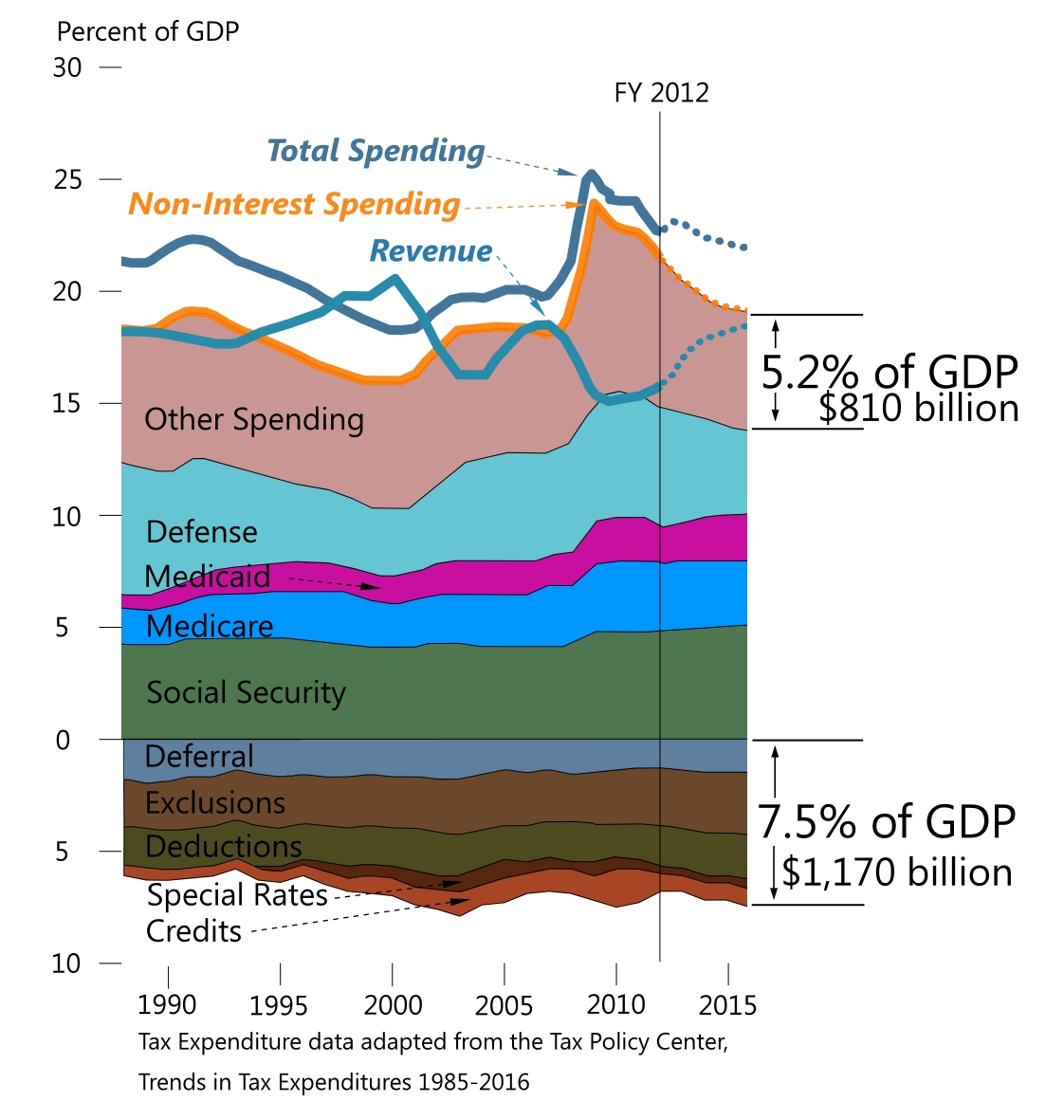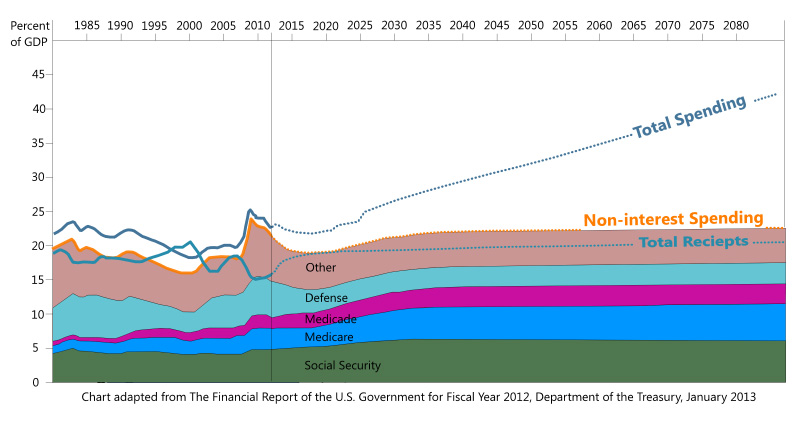Tax Expenditures Are Part of the Budget
 |
Tax Expenditures (credits, deductions, special rates, deferrals
and exclusions) are the worst part of the budget.
The chart at left combines the U.S. Treasury's projections through
2016 with
tax expenditure spending estimates for the same time frame prepared by the
Tax Policy Center.
In the short term the projections show revenue going up and spending
going down. This suggests that budget and tax reform may not be quite as
urgent as some in the "fix the debt" crowd have suggested. There is time to make sure that the economy recovers
from the Great Recession and the unemployment
rate comes down before finalizing consensus on much needed, "once in a generation"
tax reform. A growing number of advocates want tax reform that will reverse the
long term decline of the poor and middle class. |
The
Financial Report of the U. S. Government for Fiscal Year 2012
prepared by the Department of the Treasury provided a long term look at the
government's financial condition. The report concludes:
The Government took potentially significant steps
towards fiscal sustainability by enacting: (1) the ACA in 2010 and (2) the
BCA in 2011. The ACA holds the prospect of lowering the long-term per
beneficiary spending growth for Medicare and Medicaid, and the BCA
significantly curtails discretionary spending. Together, these two laws
substantially reduce the estimated long-term fiscal gap. But even with these
new laws, the Government's debt-to-GDP ratio is projected to increase
continuously over the next 75 years and beyond if current policy is kept in
place, which implies that current policy is not sustainable. Subject to the
important caveat that changes in policy not be so abrupt that they slow the
economy’s recovery, the sooner policies are put in place to avert these
trends, the smaller the revenue increases and/or spending decreases will
need to be to return the Government to a sustainable fiscal path.
The introduction to the Financial Report contains "Chart 5: History and
Current Policy Projections for Receipts, Non-Interest Spending and Total
Spending" which has been adapted and reprinted below.

The projected cumulative
deficits will cause spending for interest (on the mounting debt) to escalate
at an alarming rate. The debt to GDP ratio was, "73 percent at the end of
fiscal year 2012 and under current policy is projected to be 78 percent
in 2022, 145 percent in 2042, and 395 percent in 2087," according to the
report.
Treasury suggests that fiscal prudence requires an almost immediate
increase of the average primary surplus to 2.7% of GDP between 2013 and
2087. This translates to a combination of tax increases and spending cuts of
about $420 billion a year in present dollars. The President and Congress
have been generally considering reforms which are a fraction of this amount.
If nothing is done about the deficit until
2023, an average surplus of 3.2% of GDP will be needed; and if congress waits
until 2033 to fix the problem, an average surplus of 4.1% of GDP will be needed.
|